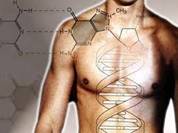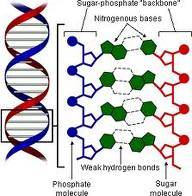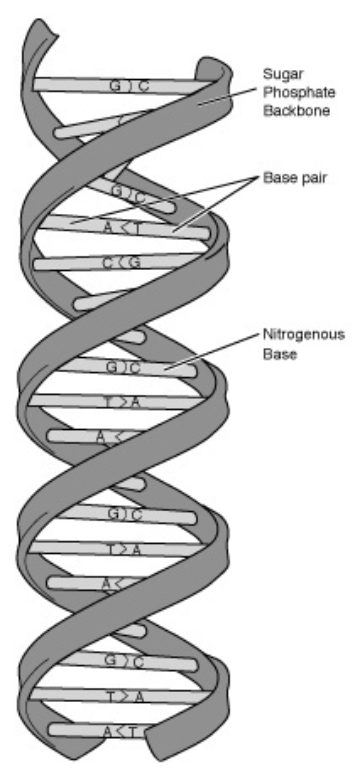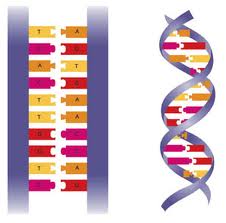English Guide: Practical Tips for Better English Communication
 The last two decades have been hugely transformational as digital technologies have disrupted every walk of life. This will only continue in the new decade, as machine learning, deep learning and artificial intelligence (AI) begin to play an integral part in our workplaces. As a result, workplaces will require very different skillsets than they needed until now. If you are a youngster looking for rapid career development in this new decade, then...
The last two decades have been hugely transformational as digital technologies have disrupted every walk of life. This will only continue in the new decade, as machine learning, deep learning and artificial intelligence (AI) begin to play an integral part in our workplaces. As a result, workplaces will require very different skillsets than they needed until now. If you are a youngster looking for rapid career development in this new decade, then...
 A career in sales can be very exciting and lucrative for people who do well in it. Sales brings in revenues for any organisation, and revenues help companies move forward. As long as one is performing well and continues to bring in sales, one’s job is fairly secure because in times of adversity businesses slash costs, while trying to keep revenues high. Yet, success in a sales career isn’t guaranteed for everyone. It takes certain personality...
A career in sales can be very exciting and lucrative for people who do well in it. Sales brings in revenues for any organisation, and revenues help companies move forward. As long as one is performing well and continues to bring in sales, one’s job is fairly secure because in times of adversity businesses slash costs, while trying to keep revenues high. Yet, success in a sales career isn’t guaranteed for everyone. It takes certain personality...
 In a recent article, we wrote about the difference between improve and improvise and how to use these two similar terms appropriately. Continuing this series on using similar-sounding English words correctly, let us consider the use of the words “affect” and “effect”.
Both terms mean “impact” or “result” of something, but their usage varies depending on the context in which they are being used.
Affect
The word “affect” is generally used in the...
In a recent article, we wrote about the difference between improve and improvise and how to use these two similar terms appropriately. Continuing this series on using similar-sounding English words correctly, let us consider the use of the words “affect” and “effect”.
Both terms mean “impact” or “result” of something, but their usage varies depending on the context in which they are being used.
Affect
The word “affect” is generally used in the...
 English language has plenty of words that seem very similar but mean very different. It is quite easy to ignore the subtle difference in the words themselves and consider them to mean the same thing. This results in incorrect usage of the words when writing or speaking in English, which may confuse the listener or create a negative impression about your English Communication skills. Let’s focus on two words, improve and improvise; the former is a...
English language has plenty of words that seem very similar but mean very different. It is quite easy to ignore the subtle difference in the words themselves and consider them to mean the same thing. This results in incorrect usage of the words when writing or speaking in English, which may confuse the listener or create a negative impression about your English Communication skills. Let’s focus on two words, improve and improvise; the former is a...
 Someone has rightly said, “In the mundane, nothing is sacred. In sacredness, nothing is mundane.”
Mundane is boring. There comes a time when you feel saturated with the routine tasks you are doing and you feel like doing different and challenging things. Your ardent desire to take up additional work and prove your worth overwhelms you. But this needs to be communicated effectively to your boss. Your boss should be aware that you are geared up...
Someone has rightly said, “In the mundane, nothing is sacred. In sacredness, nothing is mundane.”
Mundane is boring. There comes a time when you feel saturated with the routine tasks you are doing and you feel like doing different and challenging things. Your ardent desire to take up additional work and prove your worth overwhelms you. But this needs to be communicated effectively to your boss. Your boss should be aware that you are geared up...
 Gratitude is of vital importance in human life. We need to thank people who have, directly or indirectly, explicitly or implicitly, made a positive change in our life. ‘Thank You’ is the least that we can say. So never shy away from that.
In professional life too, gratefulness is of utmost importance, especially when someone has helped you climb up the career ladder.
It’s your promotion party and you have to give a thank you speech – this...
Gratitude is of vital importance in human life. We need to thank people who have, directly or indirectly, explicitly or implicitly, made a positive change in our life. ‘Thank You’ is the least that we can say. So never shy away from that.
In professional life too, gratefulness is of utmost importance, especially when someone has helped you climb up the career ladder.
It’s your promotion party and you have to give a thank you speech – this...
 We all have encountered situations wherein there were unavoidable or unforeseen circumstances because of which we had to extend our leave. For example, sickness, family issues, marriage etc. Now here comes the uncomfortable question – how to ask the boss for a leave extension. Quite tricky, huh?
When you are already on leave and then you have to request for extension of leave, it should be done in such a way that it is granted without much...
We all have encountered situations wherein there were unavoidable or unforeseen circumstances because of which we had to extend our leave. For example, sickness, family issues, marriage etc. Now here comes the uncomfortable question – how to ask the boss for a leave extension. Quite tricky, huh?
When you are already on leave and then you have to request for extension of leave, it should be done in such a way that it is granted without much...
 A few months back, a video of a job prospect venting out his frustrations on having to speak in English at job interviews, went viral. The protagonist of the video, a youngster, who could speak English fluently was angry that he was always asked to speak in English, and he let out his frustration with a series of expletives in Hindi. The fact that the video went viral and was shared by a large audience in the country, especially among...
A few months back, a video of a job prospect venting out his frustrations on having to speak in English at job interviews, went viral. The protagonist of the video, a youngster, who could speak English fluently was angry that he was always asked to speak in English, and he let out his frustration with a series of expletives in Hindi. The fact that the video went viral and was shared by a large audience in the country, especially among...
 Man is a social animal. We cannot survive in isolation. Also, we all crave for love and attention, no denying that. We are constantly expanding our social network. Be it personal or professional life, networking is of utmost importance to us: Social networking, for getting love and affection, and professional networking for career enhancement.
In this competitive world, we cannot lounge around waiting for opportunities to knock at our door. We...
Man is a social animal. We cannot survive in isolation. Also, we all crave for love and attention, no denying that. We are constantly expanding our social network. Be it personal or professional life, networking is of utmost importance to us: Social networking, for getting love and affection, and professional networking for career enhancement.
In this competitive world, we cannot lounge around waiting for opportunities to knock at our door. We...
 Someone has rightly said, “Good conversation starts with good listening”. Our teachers have often told us that we wouldn’t learn anything new from talking but we will definitely learn something new from listening. How true!
There’s a lot of buzz about spoken English these days, but people tend to forget that English listening is also an integral and inseparable part of English communication, which cannot be overlooked.No wonder then the...
Someone has rightly said, “Good conversation starts with good listening”. Our teachers have often told us that we wouldn’t learn anything new from talking but we will definitely learn something new from listening. How true!
There’s a lot of buzz about spoken English these days, but people tend to forget that English listening is also an integral and inseparable part of English communication, which cannot be overlooked.No wonder then the...
 India is undergoing a digital revolution. The country has embarked on the ‘Digital India’ movement that has been officially promoted by the Indian government. It is therefore not surprising to see a jump in career opportunities in the field of digital marketing, especially search engine marketing (SEM). This field attracts a lot of freshers and young job aspirants. Having good English skills will enable a person to take advantage of the growing...
India is undergoing a digital revolution. The country has embarked on the ‘Digital India’ movement that has been officially promoted by the Indian government. It is therefore not surprising to see a jump in career opportunities in the field of digital marketing, especially search engine marketing (SEM). This field attracts a lot of freshers and young job aspirants. Having good English skills will enable a person to take advantage of the growing...
 Good manners will open doors that the best education cannot.”
Etiquette is the science of living. It embraces everything.People all over the world are judged, liked, disliked, remembered or looked down with contempt based on their manners. Good manners speak a lot about your personality.
It is imperative that you display your best behaviour when you are in a public place especially when eating out. When you walk into a restaurant you don’t want to...
Good manners will open doors that the best education cannot.”
Etiquette is the science of living. It embraces everything.People all over the world are judged, liked, disliked, remembered or looked down with contempt based on their manners. Good manners speak a lot about your personality.
It is imperative that you display your best behaviour when you are in a public place especially when eating out. When you walk into a restaurant you don’t want to...
 Good teamwork is essential not only for the growth of any organisation but also for the personal growth of individuals in the organisation. An essential component of achieving good team bonding is when team members express positive thoughts about fellow team members to them directly. Sincere compliments and praise go a long way in making a person feel good and feel motivated to perform better for the team and the organisation.
There are a...
Good teamwork is essential not only for the growth of any organisation but also for the personal growth of individuals in the organisation. An essential component of achieving good team bonding is when team members express positive thoughts about fellow team members to them directly. Sincere compliments and praise go a long way in making a person feel good and feel motivated to perform better for the team and the organisation.
There are a...
 At the outset, let us state that we hope you never have to apply for a compassionate leave. However, the reality is that most of us, at some stage of our life, end up having to request for such leaves. This article is written to specifically help you in case of such an eventuality.
Before we get into the mechanics of applying for compassionate leave, let us first understand what is compassionate leave. It is leave granted to an employee upon death...
At the outset, let us state that we hope you never have to apply for a compassionate leave. However, the reality is that most of us, at some stage of our life, end up having to request for such leaves. This article is written to specifically help you in case of such an eventuality.
Before we get into the mechanics of applying for compassionate leave, let us first understand what is compassionate leave. It is leave granted to an employee upon death...

Structure of Nucleic Acids – DNA

Structure of DNA
 Nucleic acids are biological macromolecules present in all living organisms. These biological molecules are essential for life, and include DNA (deoxyribonucleic acid) and RNA (ribonucleic acid).
Nucleic acids are biological macromolecules present in all living organisms. These biological molecules are essential for life, and include DNA (deoxyribonucleic acid) and RNA (ribonucleic acid).
These are responsible for the storage and transfer of genetic information from generation to generation. Friedrich Miescher, a Swiss biochemist (1869) was the first to isolate nucleic acids from the nucleus of pus cells and Salmon sperm. He called it “nuclein”. Altman (1899) coined the term “nucleic acid”.
Deoxyribonucleic acid (DNA)
Occurrence:
DNA found in all organisms except a few viruses. The greatest amount of DNA is concentrated in the nucleus. It also occurs in cell organelles like mitochondria, plastids and centrioles.
Chemical Composition:

Deoxyribonucleic acid is a polynucleotide molecule consisting of a repeating sequence of monomeric nucleotides arranged in a linear polymeric chain. Each monomeric nucleotide is composed of three components.
i)A five carbon (pentose) sugar – Deoxyribose
II)A phosphoric acid group
III)A nitrogenous base (either purine or pyrimidine)
Purine bases are adenine and guanine. Pyrimidine bases are thymine and cytosine. The pyrimidine uracil is absent.
Adenine pairs with thymine by two hydrogen bonds. Cytosine pairs with guanine by three hydrogen bonds.
DNA – Double Helix
J.D.Watson and F.H.C. Crick in 1953 proposed the double helix model of DNA based on Chargaff’s analytical data and the X-ray diffraction studies made by M.H.F Wilkins and Rosalind Franklin. They were awarded Nobel prize in 1962 for this work.



The features of Watson and Crick model of DNA are:
1.DNA is composed of two helical polynucleotide chains that are coiled around a common axis forming a double helix (usually right-handed) resembling a spiral staircase.
2.The sugar phosphate units of the nucleotides form the backbone and the nitrogenous bases form the cross rungs of the DNA molecule.
3.Nucleotides of a strand are linked to each other through phosphor-diester bonds between the sugar of one nucleotide and the phosphate of the other nucleotide.
4.The two strands of the DNA molecule are held together by the hydrogen bonds formed between purine and the pyrimidine bases. The base pairing is specific. Always adenine pairs with thymine and guanine pairs with cytosine. This is known as complimentary base pairing. Due to this the two stands of the DNA are complimentary and not identical.
5.The amount of purines and pyrimidines are always equal (A+G=C+T). The amount of adenine is equal to the amount of thymine and the amount of cytosine is equal to guanine. This is Chargaff’s rule of base equivalence. The ratio A+G/T+C is always a unity.
6.Number of hydrogen bonds is specific. There are two hydrogen bonds between A and T and 3 hydrogen bonds between G and C (A=T and G=C).
7.The two strands are anti parallel. ie. One of them runs in 5’ to 3’ direction and the other runs in 3’ to 5’ direction.
8.The diameter of the DNA molecule is 20 A (2nm). One full turns of the double helix (one gyre) takes 34 A (3.4nm) and has 10 base pairs. One base pair is placed at an angle of 36 degrees with reference to the next base pair. The distance between the two adjacent base pair is 3.4 A degree.
9.The double helix has two grooves namely major deep groove and minor shallow groove. They alternate each other. In these grooves specific proteins interact with DNA molecule.
Functions of DNA
1.DNA is the genetic material in most of the organisms except a few RNA viruses, controlling the structure and function of an organism.
2.DNA is capable of self replication or duplication and passes on the hereditary characters to the next generation.
3.DNA undergoes mutation and genetic recombination.
4.DNA synthesizes RNA.
5.DNA sends coded information for protein synthesis. The proteins control the structure and function of the cells.
What is the difference between a DNA and the RNA?
Want to know more about DNA structure? Click here to schedule a live help with an eTutor!
About eAge Tutoring
eAgeTutor.com is the premium online tutoring provider. Using materials developed by highly qualified educators and leading content developers, a team of top-notch software experts, and a group of passionate educators, eAgeTutor works to ensure the success and satisfaction of all of its students.
Contact us today to learn more about our guaranteed results and discuss how we can help make the dreams of the student in your life come true!
Reference Links:
- http://en.wikipedia.org/wiki/Nucleic_acid
- http://en.wikipedia.org/wiki/RNA
- http://en.wikipedia.org/wiki/DNA
- http://en.wikipedia.org/wiki/Nucleic_acid_structure
- http://www.youtube.com/watch?v=qy8dk5iS1f0




